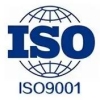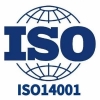What benefits can emerging smell sensors bring us?

Sensors play a crucial role in modern technology, providing machines with the information they need to function properly. This new generation of technology forms part of the Internet of Things (IoT), where machines collect data about themselves and their environment and share it to create a network of autonomous devices. The Internet of Things relies on this sharing of information and feedback, and sensors are becoming increasingly important.
Designers have long sought to provide machines with the equivalent of human senses. The human brain is very good at understanding the information collected by the sensory organs. However, AI sensors often require more complex functions. Without today's processing power, early sensors would not have been able to interpret the information they gathered.
Many of these devices, including light sensors and proximity sensors, are further limited because they rely on a clear line of sight or, in some cases, physical contact to function properly. With today's advances in technology, especially recent advances in practical artificial intelligence (AI) and machine learning (ML), designers will no longer be able to rely on simple sensing technologies alone.
Give the machine a sense of smell
Olfaction is a form of chemical analysis of low-concentration molecules suspended in the air. When these molecules meet receptors in the nose, the receptors transmit signals to the part of the brain responsible for olfactory recognition. The sensitivity of the sense of smell depends on the concentration of the receptor, which varies from species to species. For example, a dog's nose is much more sensitive than a human's, and dogs can detect chemical concentrations that humans cannot detect. However, the value of sniffer dogs in industrial Settings is also limited.
As a detection method, olfactory sensors are versatile and have unique advantages. Unlike image recognition and other vision-based technologies, odors are not dependent on the line of sight, so odors can be detected from the shelter without invasive procedures.
Use in real life
The sense of smell is closely related to traditional chemical analysis techniques, such as the use of physical cotton swabs to detect narcotics or other substances. With this method, the sample is collected using a sterile device and then sent to the analysis machine. This method is not only time consuming, but also requires the operator to have access to the object being sampled. For airport applications where passengers or goods can flow freely, this process can cause some confusion for frequent business travelers. Therefore, spot checks by security personnel are required.
Smell does not require physical contact. As a result, olfactory sensors can be deployed unobtrusively around security screening areas to gather information about passengers or baggage. These sensors have a database of all the chemical signatures of concern, as well as the processing power to analyze large numbers of samples in real time, so screeners can intercept only those travelers who detect traces of chemicals, allowing other travelers to pass through with ease.
Many other applications can take advantage of this lack of physical contact. For example, some small sensors can be installed on unmanned aerial vehicles (UAVs). The UAV's onboard sensors are capable of detecting ultra-low concentrations of chemicals that humans can't sense, so the UAV can be programmed to travel across vast areas, search for specific odors, and report in real time using new 5G or satellite communications. From the early detection of wildfires to the identification of invasive species in agriculture, the utility of the technology is also limited by the sensitivity of its chemical signature database and sensors.
Olfactory sensors can also be paired with other non-contact technologies such as thermal imaging to form a complete set of sensors. Using such a combination on a drone could allow authorities to quickly launch emergency response services in areas hit by natural disasters. Using this combination of technologies, rescuers can quickly find survivors and avoid missing the best time to rescue them.
Applications in industrial and medical Settings
Smell sensors are also being used in industry. Many industrial processes have the potential to produce harmful by-products. Smell sensors can monitor air conditions, highlight dangerous buildups of harmful chemicals, and also provide useful information about the industrial processes themselves. For example, a high concentration of unburned fuel is detected in the atmosphere, indicating that the energy efficiency of a function is low and the combustion is incomplete. Olfactory sensors, combined with a new generation of artificial intelligence technology, can provide early warning of problems and suggested remedies without human intervention.
This application can even extend to monitoring the health of the machine itself. For example, high temperatures from mechanical damage can cause the lubricating oil in the grease to drain, leaving behind a dry, crusted soap base that can lead to stuck. By detecting odors caused by changes in the chemical composition of lubricating oils, problems can be detected before they occur, allowing preventive maintenance to be scheduled.
Another interesting application for olfactory sensors is in healthcare. As medical technology continues to advance, and despite improvements in treatment techniques, early diagnosis remains the most powerful tool to ensure that patients receive the best clinical outcomes.
Many diseases, from cancer to diabetes, can have an effect on the body's chemistry, and some dogs can smell the changes before their bodies even show symptoms. Similarly, using sensors to detect changes in odor can provide critical early diagnosis, greatly improving the chances of effective treatment and rehabilitation. The non-contact, non-invasive nature of these sensors further enhances their usefulness. They can be used during an initial visit without causing treatment delays like traditional blood or tissue analysis techniques.
Technology and process
How organic olfactory receptors, such as those in the human nose, detect and recognize odors is not fully understood. Nonetheless, we do know that olfactory receptor nerve cells in the nose all have the function of recognizing a particular molecule, and developers are trying to replicate this function through various methods.
The exact process by which these sensors identify specific molecules varies from technology to technology. Some technologies use organic semiconductors because their electrical properties change predictably when exposed to specific molecules. In addition, mass spectrometry can be used, in which the sample is placed in a stream of electrons, which ionize the sample into positively charged fragments, which are then separated according to their mass-charge ratio. Since each element behaves differently under these conditions, we can identify the individual molecules present in them based on the spectral signature displayed.
In addition, some systems use ultrafast gas chromatography, in which a sample is dissolved in a fluid solvent and its components are separated at different rates to form a spectrum showing the composition of the sample.
Advanced computing techniques will help enable rapid analysis to deliver the desired results in real time. Companies such as Intel ® are working to explore ways to mimic the neural structure and workings of the human brain in order to create technologies that can cope with the situations and abstractions of ordinary human activities. The Intel Loihi 2 chipset uses a technology called neuromorphic computing, and the structure of the chip is similar to that of the human brain. This complexity promises to give AI the flexibility to process the vast amount of information gathered by sensors.
Conclusion
We increasingly rely on machines to help us make complex decisions. We must equip these machines with the technology needed to gather the information needed to make these decisions. As a result, sensors are playing an increasingly important role in numerous applications.
In addition to traditional vision sensors, engineers are also using alternative methods such as smell sensors. Combined with advanced processing power, olfactory sensors offer a range of advantages over other technologies. They require neither physical sight nor physical contact.
Die Produkte, an denen Sie interessiert sein könnten
 |
TPCM-2.4-5 | CMC 2.41MH 5A 2LN TH | 6894 More on Order |
 |
AA53002-015 | XFRMR TOROIDAL 300VA CHAS MOUNT | 8352 More on Order |
 |
62035-P2S02 | XFRMR TOROIDAL 7VA CHAS MOUNT | 6642 More on Order |
 |
62034-P2S02 | XFRMR TOROIDAL 7VA CHAS MOUNT | 7938 More on Order |
 |
62021-P2S02 | XFRMR TOROIDAL 5VA CHAS MOUNT | 5058 More on Order |
 |
62075-P2S02 | XFRMR TOROIDAL 35VA CHAS MOUNT | 7308 More on Order |
 |
62073-P2S02 | XFRMR TOROIDAL 35VA CHAS MOUNT | 5292 More on Order |
 |
70074K | XFRMR TOROIDAL 35VA THRU HOLE | 6840 More on Order |
 |
70072K | XFRMR TOROIDAL 35VA THRU HOLE | 5634 More on Order |
 |
70054K | XFRMR TOROIDAL 15VA THRU HOLE | 4716 More on Order |
 |
70043K | XFRMR TOROIDAL 10VA THRU HOLE | 5562 More on Order |
 |
70041K | XFRMR TOROIDAL 10VA THRU HOLE | 2826 More on Order |
 |
70024K | XFRMR TOROIDAL 5VA THRU HOLE | 8748 More on Order |
 |
70015K | XFRMR TOROIDAL 3.2VA THRU HOLE | 7578 More on Order |
 |
70014K | XFRMR TOROIDAL 3.2VA THRU HOLE | 5562 More on Order |
 |
70013K | XFRMR TOROIDAL 3.2VA THRU HOLE | 4392 More on Order |
 |
70011K | XFRMR TOROIDAL 3.2VA THRU HOLE | 7560 More on Order |
 |
70003K | XFRMR TOROIDAL 1.6VA THRU HOLE | 2520 More on Order |
 |
70002K | XFRMR TOROIDAL 1.6VA THRU HOLE | 5040 More on Order |
 |
62033-P2S02 | XFRMR TOROIDAL 7VA CHAS MOUNT | 6480 More on Order |
 |
62060-P2S02 | XFRMR TOROIDAL 25VA CHAS MOUNT | 23778 More on Order |
 |
70064K | XFRMR TOROIDAL 25VA THRU HOLE | 13758 More on Order |
 |
70034K | XFRMR TOROIDAL 7VA THRU HOLE | 8088 More on Order |
 |
AC1025 | TRANSFORMER CURRENT 25.0 AMP | 4230 More on Order |









